 Cinnamon does not only taste good, it also contains many health benefits such as: Anti-Clotting and Anti-Microbial actions, Blood Sugar Control, it boosts Brain Function, it's Calcium and Fiber protect against Heart Disease and improve Colon Health, among other things.
Cinnamon is one of the oldest spices known. It was mentioned in the Bible and was used in ancient Egypt not only as a beverage flavoring and medicine, but also as an embalming agent. It was so highly treasured that it was considered more precious than gold. Around this time, cinnamon also received much attention in China, which is reflected in its mention in one of the earliest books on Chinese botanical medicine, dated around 2,700 B.C. Cinnamon’s popularity continued throughout history. It became one of the most relied upon spices in Medieval Europe. Due to its demand, cinnamon became one of the first commodities traded regularly between the Near East and Europe. Ceylon cinnamon is produced in Sri Lanka, India, Madagascar, Brazil and the Caribbean, while cassia is mainly produced in China, Vietnam and Indonesia.
Although available throughout the year, the fragrant, sweet and warm taste of cinnamon is a perfect spice to use during the winter months. Cinnamon has a long history both as a spice and as a medicine. It is the brown bark of the cinnamon tree, which is available in its dried tubular form known as a quill or as ground powder. The two varieties of cinnamon, Chinese and Ceylon, have similar flavor, however the cinnamon from Ceylon is slightly sweeter, more refined and more difficult to find in local markets.
Cinnamon does not only taste good, it also contains many health benefits such as: Anti-Clotting and Anti-Microbial actions, Blood Sugar Control, it boosts Brain Function, it's Calcium and Fiber protect against Heart Disease and improve Colon Health, among other things.
Cinnamon is one of the oldest spices known. It was mentioned in the Bible and was used in ancient Egypt not only as a beverage flavoring and medicine, but also as an embalming agent. It was so highly treasured that it was considered more precious than gold. Around this time, cinnamon also received much attention in China, which is reflected in its mention in one of the earliest books on Chinese botanical medicine, dated around 2,700 B.C. Cinnamon’s popularity continued throughout history. It became one of the most relied upon spices in Medieval Europe. Due to its demand, cinnamon became one of the first commodities traded regularly between the Near East and Europe. Ceylon cinnamon is produced in Sri Lanka, India, Madagascar, Brazil and the Caribbean, while cassia is mainly produced in China, Vietnam and Indonesia.
Although available throughout the year, the fragrant, sweet and warm taste of cinnamon is a perfect spice to use during the winter months. Cinnamon has a long history both as a spice and as a medicine. It is the brown bark of the cinnamon tree, which is available in its dried tubular form known as a quill or as ground powder. The two varieties of cinnamon, Chinese and Ceylon, have similar flavor, however the cinnamon from Ceylon is slightly sweeter, more refined and more difficult to find in local markets.
Health Benefits
Cinnamon’s unique healing abilities come from three basic types of components in the essential oils found in its bark. These oils contain active components called cinnamaldehyde, cinnamyl acetate, and cinnamyl alcohol, plus a wide range of other volatile substances.
 ability to absorb and use glucose from the blood. On going in vitro or test tube research conducted by Richard Anderson and his colleagues at the USDA Human Nutrition Research Center is providing new understanding of the mechanisms through which cinnamon enhances insulin activity. In their latest paper, published in the Journal of Agricultural and Food Chemistry, Anderson et al. characterize the insulin-enhancing complexes in cinnamon—a collection of catechin/epicatechin oligomers that increase the body’s insulin-dependent ability to use glucose roughly 20-fold.. Some scientists had been concerned about potentially toxic effects of regularly consuming cinnamon. This new research shows that the potentially toxic compounds in cinnamon bark are found primarily in the lipid (fat) soluble fractions and are present only at very low levels in water soluble cinnamon extracts, which are the ones with the insulin-enhancing compounds. A recent animal study demonstrating cinnamon’s beneficial effects on insulin activity appeared in the December 2003 issue of Diabetes Research and Clinical Practice. In this study, when rats were given a daily dose of cinnamon (300 mg per kilogram of body weight) for a 3 week period, their skeletal muscle was able to absorb 17% more blood sugar per minute compared to that of control rats, which had not received cinnamon, an increase researchers attributed to cinnamon’s enhancement of the muscle cells’ insulin-signaling pathway. In humans with type 2 diabetes, consuming as little as 1 gram of cinnamon per day was found to reduce blood sugar, triglycerides, LDL (bad) cholesterol, and total cholesterol, in a study published in the December 2003 issue of Diabetes Care. The placebo-controlled study evaluated 60 people with type 2 diabetes (30 men and 30 women ranging in age from 44 to 58 years) who were divided into 6 groups. Groups 1, 2, and 3 were given 1, 3, or 6 grams of cinnamon daily, while groups 4, 5, and 6 received 1, 3 or 6 grams of placebo. After 40 days, all three levels of cinnamon reduced blood sugar levels by 18-29%, triglycerides 23-30%, LDL cholesterol 7-27%, and total cholesterol 12-26%, while no significant changes were seen in those groups receiving placebo. The researchers’ conclusion: including cinnamon in the diet of people with type 2 diabetes will reduce risk factors associated with diabetes and cardiovascular diseases.
ability to absorb and use glucose from the blood. On going in vitro or test tube research conducted by Richard Anderson and his colleagues at the USDA Human Nutrition Research Center is providing new understanding of the mechanisms through which cinnamon enhances insulin activity. In their latest paper, published in the Journal of Agricultural and Food Chemistry, Anderson et al. characterize the insulin-enhancing complexes in cinnamon—a collection of catechin/epicatechin oligomers that increase the body’s insulin-dependent ability to use glucose roughly 20-fold.. Some scientists had been concerned about potentially toxic effects of regularly consuming cinnamon. This new research shows that the potentially toxic compounds in cinnamon bark are found primarily in the lipid (fat) soluble fractions and are present only at very low levels in water soluble cinnamon extracts, which are the ones with the insulin-enhancing compounds. A recent animal study demonstrating cinnamon’s beneficial effects on insulin activity appeared in the December 2003 issue of Diabetes Research and Clinical Practice. In this study, when rats were given a daily dose of cinnamon (300 mg per kilogram of body weight) for a 3 week period, their skeletal muscle was able to absorb 17% more blood sugar per minute compared to that of control rats, which had not received cinnamon, an increase researchers attributed to cinnamon’s enhancement of the muscle cells’ insulin-signaling pathway. In humans with type 2 diabetes, consuming as little as 1 gram of cinnamon per day was found to reduce blood sugar, triglycerides, LDL (bad) cholesterol, and total cholesterol, in a study published in the December 2003 issue of Diabetes Care. The placebo-controlled study evaluated 60 people with type 2 diabetes (30 men and 30 women ranging in age from 44 to 58 years) who were divided into 6 groups. Groups 1, 2, and 3 were given 1, 3, or 6 grams of cinnamon daily, while groups 4, 5, and 6 received 1, 3 or 6 grams of placebo. After 40 days, all three levels of cinnamon reduced blood sugar levels by 18-29%, triglycerides 23-30%, LDL cholesterol 7-27%, and total cholesterol 12-26%, while no significant changes were seen in those groups receiving placebo. The researchers’ conclusion: including cinnamon in the diet of people with type 2 diabetes will reduce risk factors associated with diabetes and cardiovascular diseases. In addition to its unique essential oils, cinnamon is an excellent source of the trace mineral manganese and a very good source of dietary fiber, iron and calcium. The combination of calcium and fiber in cinnamon is important and can be helpful for the prevention of several different conditions. Both calcium and fiber can bind to bile salts and help remove them from the body. By removing bile, fiber helps to prevent the damage that certain bile salts can cause to colon cells, thereby reducing the risk of colon cancer. In addition, when bile is removed by fiber, the body must break down cholesterol in order to make new bile. This process can help to lower high cholesterol levels, which can be helpful in preventing atherosclerosis and heart disease. For sufferers of irritable bowel syndrome, the fiber in cinnamon may also provide relief from constipation or diarrhea. A Traditional Warming Remedy In addition to the active components in its essential oils and its nutrient composition, cinnamon has also been valued in energy-based medical systems, such as Traditional Chinese Medicine, for its warming qualities. In these traditions, cinnamon has been used to provide relief when faced with the onset of a cold or flu, especially when mixed in a tea with some fresh ginger. Description Cinnamon is the brown bark of the cinnamon tree, which when dried, rolls into a tubular form known as a quill. Cinnamon is available in either its whole quill form (cinnamon sticks) or as ground powder. While there are approximately one hundred varieties of Cinnamonum verum (the scientific name for cinnamon), Cinnamonum zeylanicum (Ceylon cinnamon) and Cinnamonum aromaticum (Chinese cinnamon) are the leading varieties consumed. Ceylon cinnamon is also referred to as “true cinnamon”, while the Chinese variety is known as “cassia”. While both are relatively similar in characteristics and both feature a fragrant, sweet and warm taste, the flavor of the Ceylon variety is more refined and subtle. Ceylon cinnamon is more rare in North America than the cassia, the less expensive variety, which is the most popular in the United States.
In addition to its unique essential oils, cinnamon is an excellent source of the trace mineral manganese and a very good source of dietary fiber, iron and calcium. The combination of calcium and fiber in cinnamon is important and can be helpful for the prevention of several different conditions. Both calcium and fiber can bind to bile salts and help remove them from the body. By removing bile, fiber helps to prevent the damage that certain bile salts can cause to colon cells, thereby reducing the risk of colon cancer. In addition, when bile is removed by fiber, the body must break down cholesterol in order to make new bile. This process can help to lower high cholesterol levels, which can be helpful in preventing atherosclerosis and heart disease. For sufferers of irritable bowel syndrome, the fiber in cinnamon may also provide relief from constipation or diarrhea. A Traditional Warming Remedy In addition to the active components in its essential oils and its nutrient composition, cinnamon has also been valued in energy-based medical systems, such as Traditional Chinese Medicine, for its warming qualities. In these traditions, cinnamon has been used to provide relief when faced with the onset of a cold or flu, especially when mixed in a tea with some fresh ginger. Description Cinnamon is the brown bark of the cinnamon tree, which when dried, rolls into a tubular form known as a quill. Cinnamon is available in either its whole quill form (cinnamon sticks) or as ground powder. While there are approximately one hundred varieties of Cinnamonum verum (the scientific name for cinnamon), Cinnamonum zeylanicum (Ceylon cinnamon) and Cinnamonum aromaticum (Chinese cinnamon) are the leading varieties consumed. Ceylon cinnamon is also referred to as “true cinnamon”, while the Chinese variety is known as “cassia”. While both are relatively similar in characteristics and both feature a fragrant, sweet and warm taste, the flavor of the Ceylon variety is more refined and subtle. Ceylon cinnamon is more rare in North America than the cassia, the less expensive variety, which is the most popular in the United States.





 Dec 2024
Dec 2024
 May 2024
May 2024
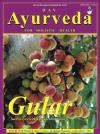 September 2022
September 2022
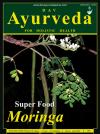 April 2022
April 2022
 October 2020
October 2020
 Jan 2020
Jan 2020
 June 2019
June 2019
 January-February 2019
January-February 2019
 Augest-September
Augest-September
 April 2018
April 2018
 November 2017
November 2017
 June 2017
June 2017
 November 2016
November 2016
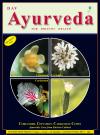 September 2015
September 2015
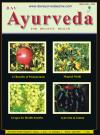 March 2015
March 2015
 July 2014
July 2014
 January 2014
January 2014
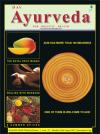 July2013
July2013
 March 2013
March 2013
 May 2012
May 2012
 May 2011
May 2011
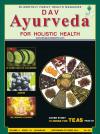 Sep 2010
Sep 2010
 Jun 2010
Jun 2010
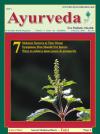 Feb 2010
Feb 2010
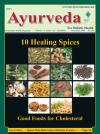 December 2009
December 2009
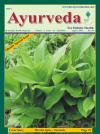 August 2009
August 2009
 June 2009
June 2009
 Feb 2009
Feb 2009
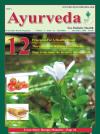 December 2008
December 2008
 October 2008
October 2008
 March 2008
March 2008
 July 2008
July 2008
 May 2008
May 2008